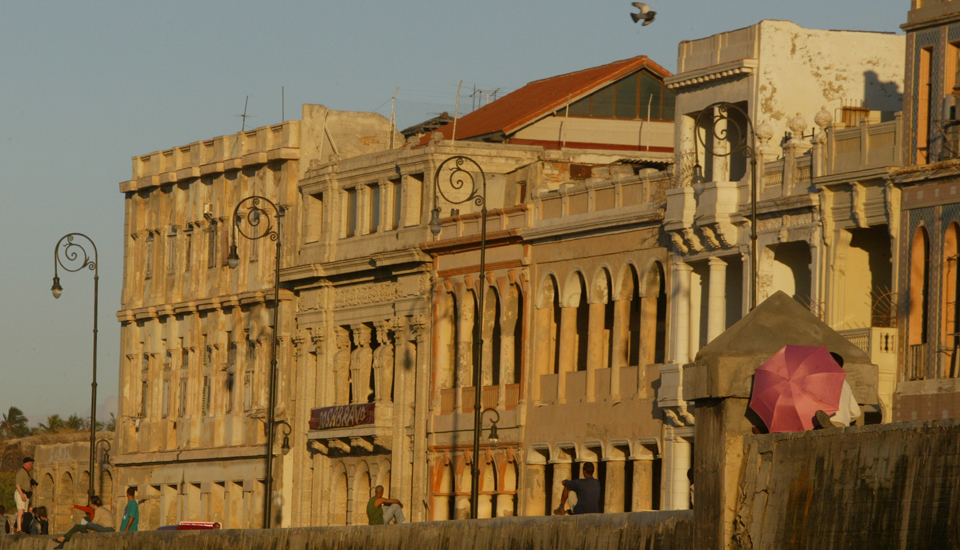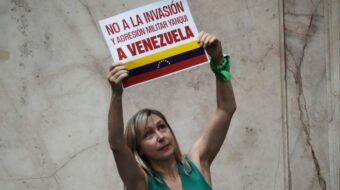
Like the sun, the U.S. blockade of Cuba will not disappear soon. Unlike the sun, the blockade has receded from public attention in the United States. It has continued, mostly unchanged, for almost 60 years. Here, we explore the matter of change.
Any U.S. politician who says nice things about Cuba can expect abuse. That’s been so since the victory of the Cuban Revolution in 1959. Recently, presidential candidate Bernie Sanders tried to ward off attacks as he praised Cuba’s 1961 literacy campaign. He labeled Cuba’s leadership as “authoritarian,” but it didn’t work to head off attacks over his positive remarks. Sens. Rubio and Menendez and other politicians, Democratic and Republican alike, lashed out. Democratic leaders in Florida joined in. Cuba matters there at voting time.
Once more, on Feb. 25, President Donald Trump authorized continuation of the blockade. He proclaimed a national emergency. Legislation passed in 1976 requires the president to periodically reconfirm the pressing nature of the Cuban emergency.
Regulations have long been in place that bar ships from entering U.S. ports for six months after leaving off or taking on cargo in Cuba. The U.S. Treasury Department has long penalized companies in third countries, or their affiliates anywhere, for marketing products in Cuba that contain even tiny U.S. components. Foreign banks, insurance companies, and international agencies have long paid big fines if they deal with Cuba directly or handle U.S. dollars in the course of someone else’s transactions with Cuba. Even now, U.S. travelers to the island risk fines for violating this or that blockade rule. Easing of blockade regulations under the Carter and Obama administrations was short-lived.
President Trump in 2019 decreed that families whose properties were nationalized by the revolutionary government could use U.S. courts to sue individuals or companies anywhere who had occupied or profited from such properties. The idea is to add risk to foreign investments in Cuba and thereby impede Cuba’s economic development.
The U.S. government has never strayed from cruel State Department recommendations in 1960 on how to defeat Cuba’s Revolution. The priority was on creating shortages and suffering so that desperate Cubans might rise up in rebellion. According to official sources in Havana, cumulative losses and shortages over the decades have deprived Cuba of $922.6 billion, adjusted for inflation.
The U.S. government is persistent, too, in its dedication to taking down other objectionable governments, as evidenced by regime change in Iran (1953), Guatemala (1954), Dominican Republic (1965), Chile (1973), Grenada, (1983), Panama (1989), Nicaragua (1980s), Honduras (2009), and Bolivia (2019)—and by assaults on Venezuela.
Proponents of the blockade can choose among various rationales. The blockade solidifies the loyalty of right-wingers to this or that administration, is an expression of gratitude to Cuban-Americans for their political support, projects an image of serious state power, or maybe will finish off the Cuban Revolution. Justifications like these, with long half-lives, require little new thinking; U.S. policy-making on Cuba is on autopilot.
In Cuba, it’s different. The revolutionary government has to respond to people’s needs, overcome the U.S. blockade, and build a socialist society. Clearly, decision-making amidst conflict and confrontation is a challenge for planners and leaders at every level. They presumably strategize, study, listen, calculate, analyze, persuade, compromise, argue, and more. This kind of effort, with rough edges, speaks to thought processes that promote change rather than serve the status quo. In short, seeds of change germinate in soils rich with contradictions.
This is the context for Cubans who, following the lead of former President Fidel Castro, engage in what they call a “battle of ideas.” For instance, President Miguel Díaz–Canel, officials of the Ministry of Economics and Planning (MEP), and other government and Communist Party leaders met on Feb. 24. Dealing with the blockade, they discussed economic planning. Referring to the MEP as a “ministry of thought,” the president called for prioritization of “administrative mechanisms over economics and finances,” a balancing of economic centralization and decentralization, planning that is “more open and less detailed,” and transparency in reporting “economic results, the good and the bad.”
Ethical values and legal principles have been asserted. On Feb. 25, Chancellor Bruno Rodríguez presented Cuba’s case against the U.S. government before the United Nations Council on Human Rights. He cited “non-conventional wars … violations of international law … rights to peace and free determination … the selflessness of more than 400,000 Cuban health care workers that in 56 years have fulfilled missions in 164 nations.” He denounced “infringement by neoliberalism of economic, social, and cultural rights” and a “lack of will to confront climate change.”
José Martí, Cuba’s national hero, figures into political discourse. Recalling sentiments on Martí that students had communicated on his website, Díaz-Canel on Feb. 24 mentioned Enrique who had carried the Cuban flag to the Summit of Pico Turquino, Cuba’s highest mountain, “solely to honor Martí.” For the president, Martí is the “most universal of Cubans.” It was Martí who, in preparing Cubans for their War of Independence of 1895-1898, famously advanced the idea of “With all, for the good of all.”
Cubans have put his ideas into practice. Argentinian observer Atilio Boron recently observed that Cuba has no destitute, homeless children in the streets. They are in school and well cared for. There are no homeless people. All Cubans have access to health care and education at no personal cost. Schooling extends from kindergarten to graduate school and beyond. Boron also highlights U.S. deficiencies in these same areas.
Ultimately, tension in Cuba stemming from conflicting realities stimulates innovative thinking that embraces change. Presumably, some of the change entails the refurbishing of useful tools like effective state planning, attention to the common good, and unity. In those circumstance, older usages—the old realities—disappear.
Struggles in Vietnam to secure independence from France and the United States in some respects foreshadowed the state of siege weighing on Cuba to this day. Strategists in Vietnam, also working under stress, must have relied on tools similar to ones useful then and now in Cuba. And, of course, realities did change.
Over three decades, the annual GDP for the Socialist Republic of Vietnam has averaged 6.5% (6.8% in 2019). Vietnam’s export income now ranks among the world’s top 25 nations. The nation’s poverty rate fell from 75% to nine percent, unemployment remains at 3-4%, and literacy rose to 93%. Life expectancy at birth is 72 years. The entire population enjoys access to free health care, education, and comprehensive social services.
If it’s true that Cuba’s experience nurtured a prepared and unified people, with values, new challenges there will likely be handled effectively. One on the way, possibly, is the current coronavirus pandemic. If it arrives, the contrast between Cuba’s response and that of the United States will be instructive. After all, Cuba’s health care system emphasizes both preventative and curative care. It’s a public health system, no more, no less.
The U.S. health care system reflects weak advocacy for preventative care and surrender to the market-based economy. The Harvard Health Policy Review headlined a 2018 article this way: “Increasing Mortality and Declining Health Status in the USA: Where is Public Health?”









